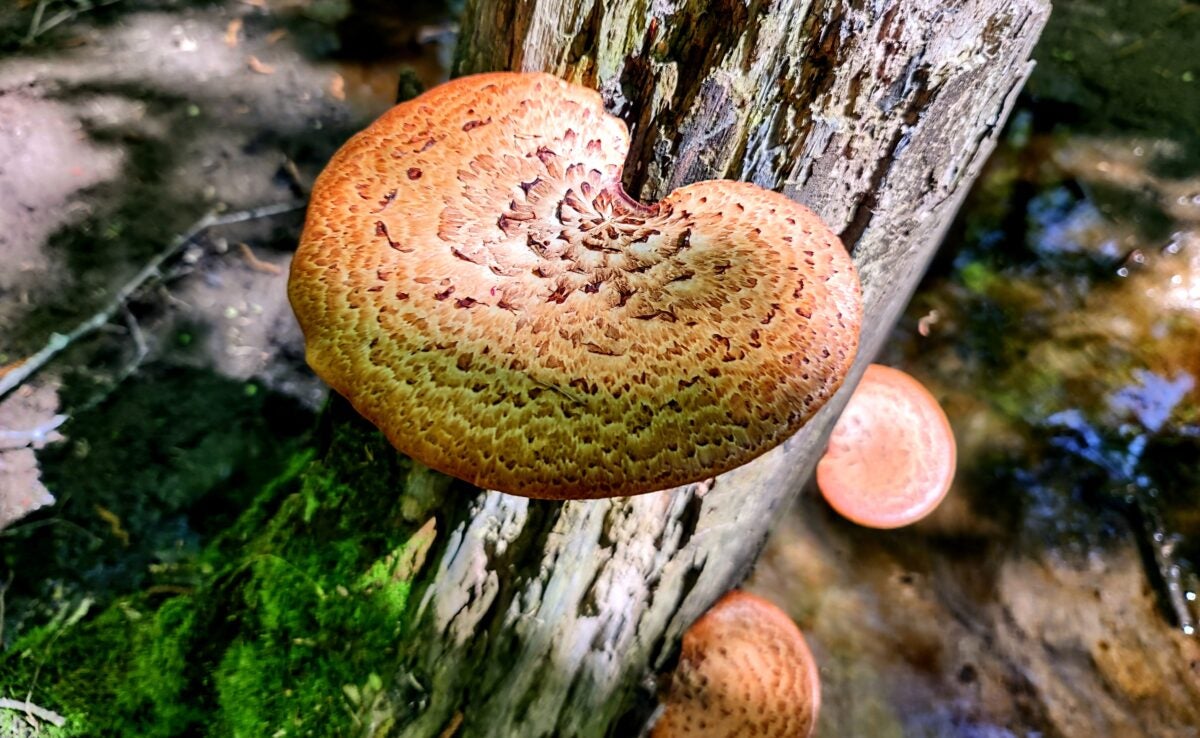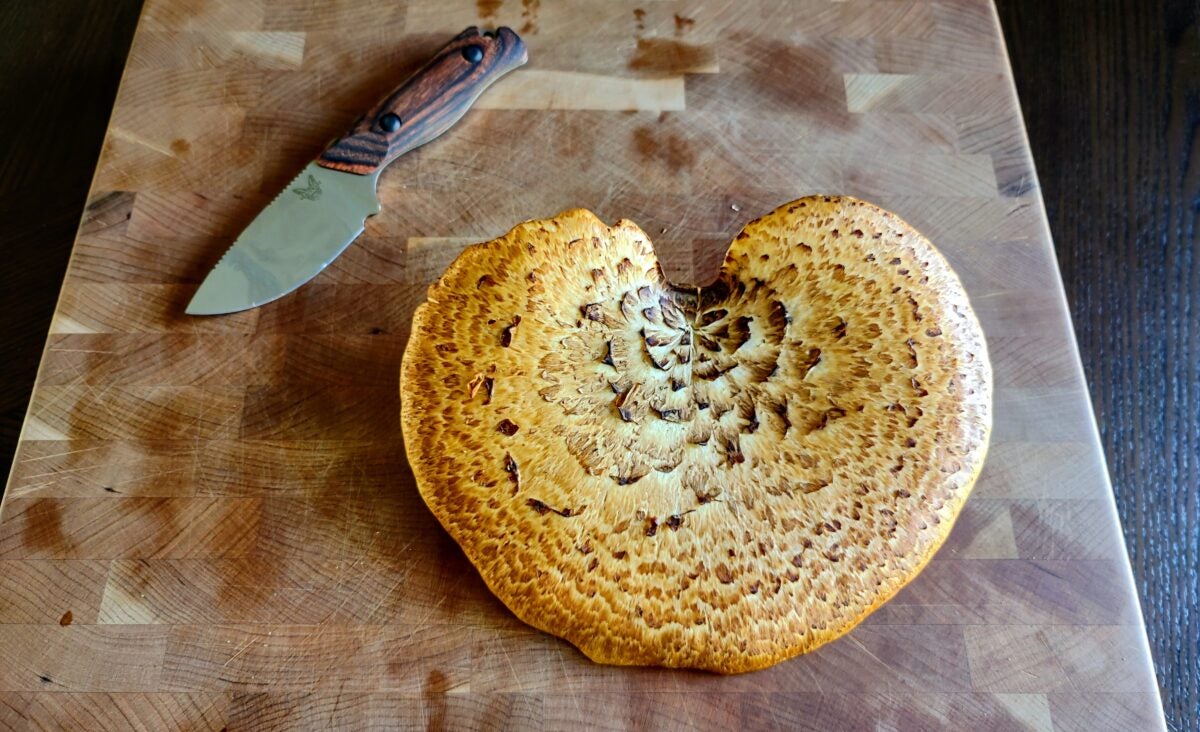Home on the Range #040 – Pheasant Back Mushrooms (Dryad’s Saddle)
Adam Scepaniak 05.26.23

Spring is a wonderful time to be out in nature. Not only because it is the dawn of a new era – the ushering in of a new season – but also because as the world thaws out and begins to bloom, that means there are new plants to forage in the woods to supplement a lot of the game meat we may have harvested through the winter and past hunting seasons. One of my favorite is to collect ripe pheasant back mushrooms (also known as Dryad’s Saddle). These are a “porous shelf” mushrooms often found on fallen down logs, stumps, and decaying forest matter. As their first name implies, the flat cap has dark brown scales reminiscent of a pheasant’s tail with a creamy yellowish/tan background. These mushrooms can be abundant in deciduous forest climates like those in my home state of Minnesota, and pair well as a topper for steaks, pork chops, and other thick cut meats. Let’s dive in further as to what the pheasant back mushroom is all about, what to look for, and how to find them.
“Home on the Range” Series Coverage on AllOutdoor
- Home on the Range #039 – Turkey Slate Call Competition with a Neighbor
- Home on the Range #038 – Turkey Hunting to Supplement your Freezer
- Home on the Range #037: [NSFW] Dangerous Livestock – Cautionary Tale
- Home on the Range #036: Yeti Tundra 75 Hard Cooler – AllOutdoor Review
- Home on the Range #035: The 5 Bare Necessities of Raising Chickens
Welcome to our reoccurring series of “Home on the Range.” Here, we would like to share all of our experiences for those who may be homesteading, living off the land, hunting, farming, ranching, and truly investing in nature and the great outdoors. The ability to provide for yourself and your family can be tremendously rewarding and simultaneously difficult at times. So, in “Home on the Range” we want to share our different exploits so you can learn and hopefully we can receive your feedback along the way as well.
Pheasant Back Mushrooms (Dryad’s Saddle)
Once all of winter’s snow recedes and spring begins to pop there are new lush, beautiful plants growing everywhere. Some are straight poisonous while others are delicious and pair perfectly with steak and other meals you might want to serve up with friends and family. In the latter category, pheasant back mushrooms – as they are colloquially referred to – are often abundant in temperate deciduous forest regions once temps begin to consistently hit 50°F and adequate moisture is present. For those in the Midwest like myself, all of those properties have perfectly aligned in the past few weeks and pheasant back mushrooms are growing strong.
A good, delicious, ripe pheasant back mushroom will be white or creamy on the underside with a fresh looking porous bottom. Like many mushrooms, pheasant back mushrooms have a “window of opportunity” where they go from being harvest-able to unpalatable.
It is important to observe the texture and color of pheasant back mushrooms because an overripe mushroom will be tough, “corky,” and taste poorly at best. An overripe mushroom will start to turn darker in color (no longer decadently white or cream colored) and feel physically firm or tough. At this point, it is best to leave the mushroom alone and simply pass on it.
Foraging for Pheasant Back Mushrooms (Dryad’s Saddle)
When it comes to finding pheasant back mushrooms they are most predominantly found leaching – or absorbing nutrients – off of elm trees that are failing (soon to be dead), or already dead elm trees. People will frequently find them on dead stumps or fallen logs with the mushrooms far too gone. While this might be disheartening if you are looking for a compliment to your evening’s dinner, it is important to note the location for next year when the conditions are prime for mushroom propagation again.
Eating Pheasant Back Mushrooms (Dryad’s Saddle)
If you made it this far… ventured into the unknown to identify, harvest, and prepare yourself to eat a wild mushroom, congratulations! We are going to leave you with a cliffhanger as far as recipes go because that will be on tap for next week. You will not need a lot: butter, honey, salt, pepper, and maybe a few other things you might have laying around in your kitchen. Overall, pheasant back mushrooms can be a great supplement to anyone’s palate especially when paired well with a steak, pork chop, or other thick cut of meat as alluded to earlier. And, while my home state of Minnesota might be slowly moving past its “primetime” for pheasant back mushrooms your state might be just gearing up! So, we implore you to get outside, explore, get your hands dirty, and maybe add a foreign, but delectable mushroom to your future plate. As always, let us know all of your thoughts in the Comments below! We always appreciate your feedback.



